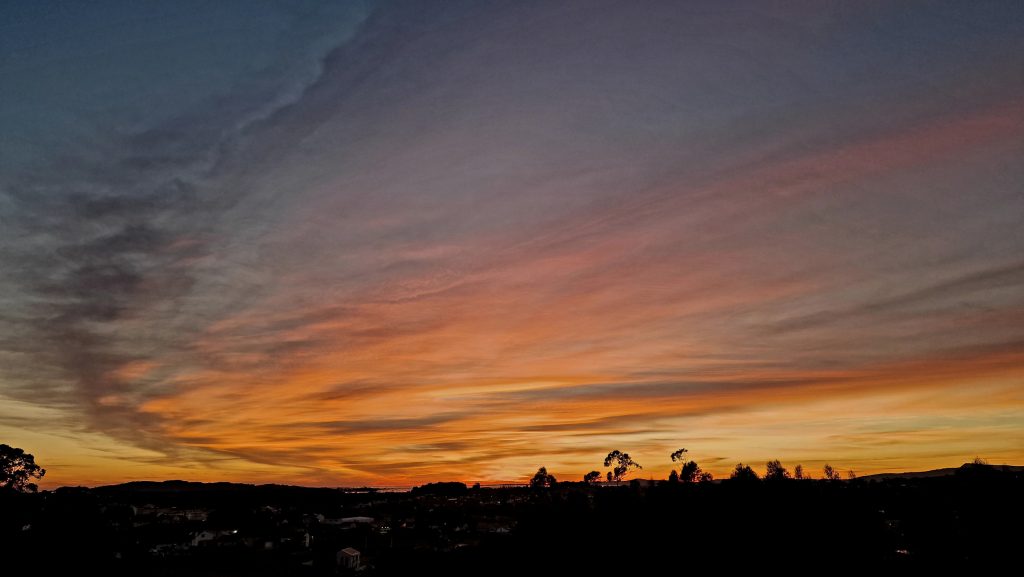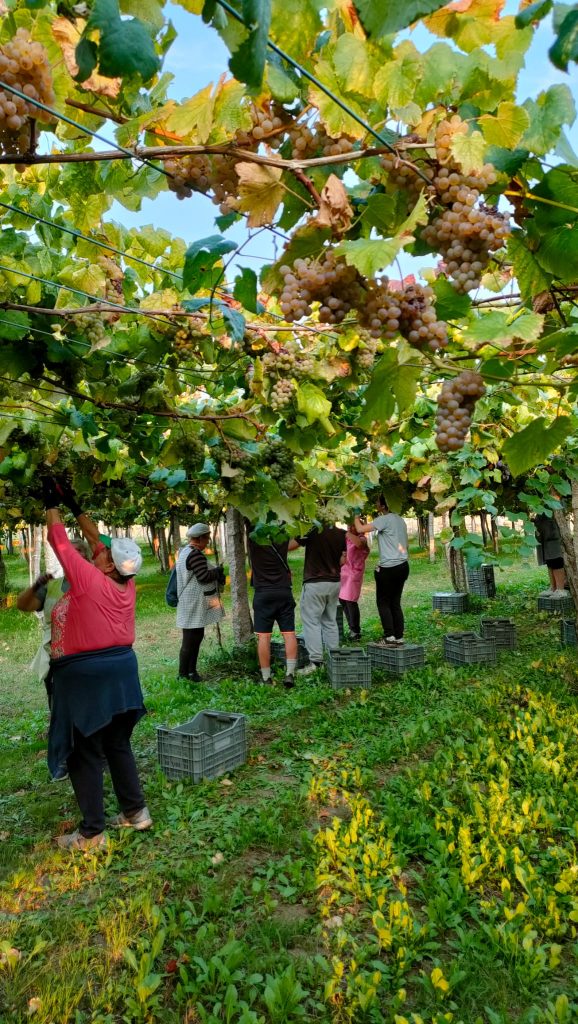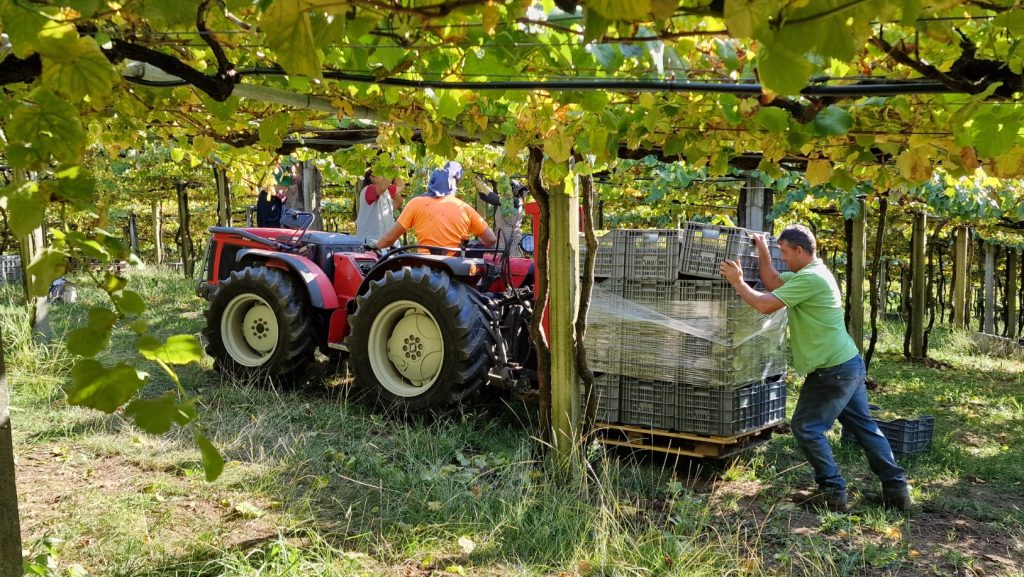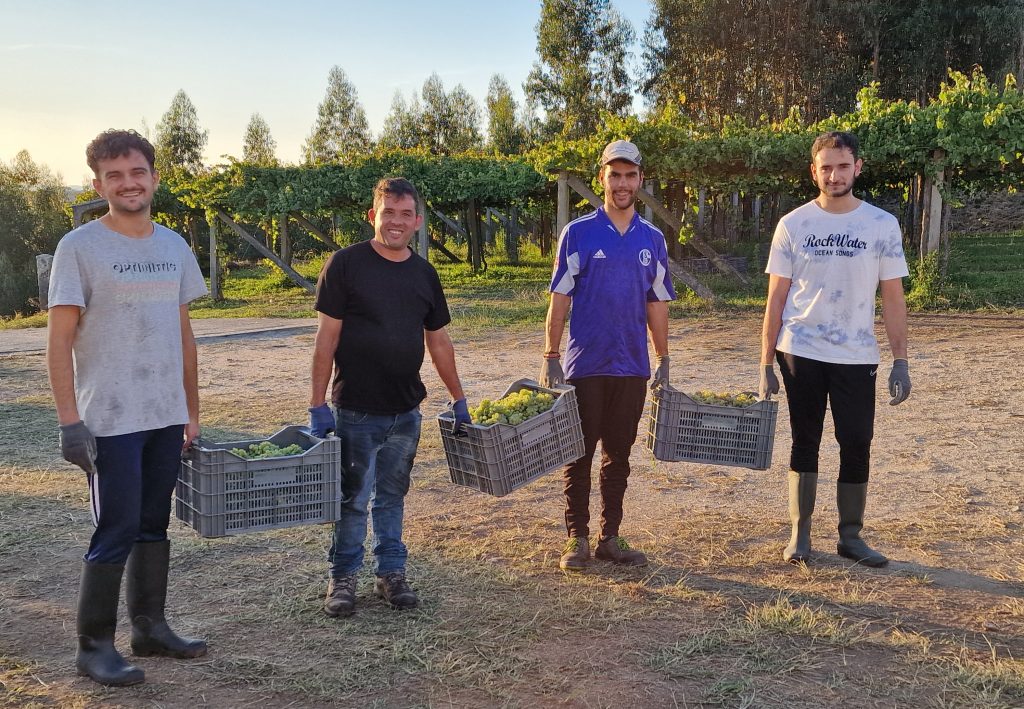Post Harvest
October 21st, 2024 | Bodega
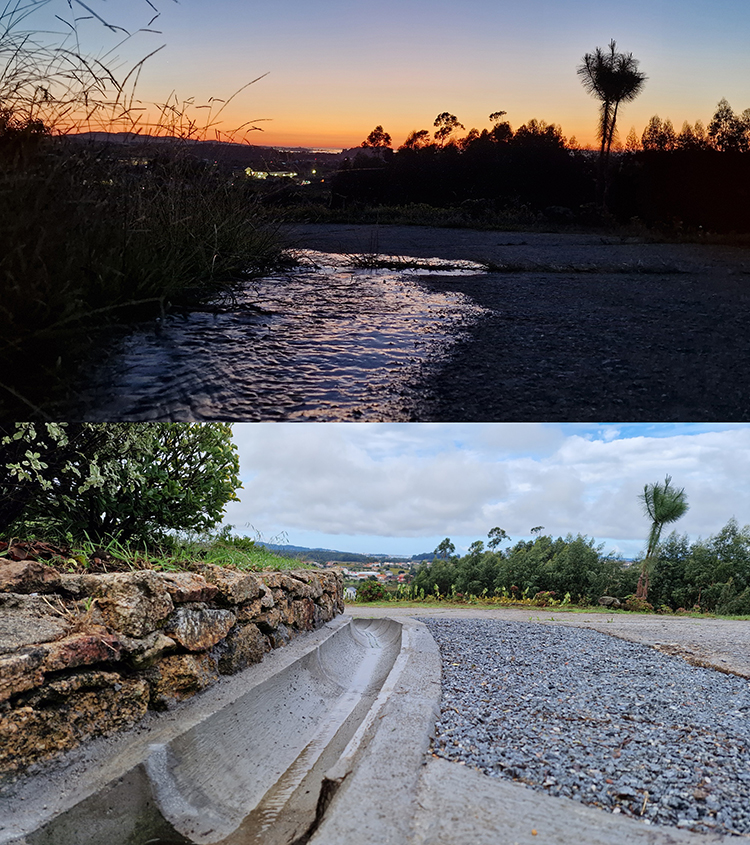
Well, it’s been a few weeks since the last grapes were picked, and we have reached a point where all fermentations have finally been completed too. It is now simply a question of allowing the new wine to sit quietly on it’s lees until the Spring of new year. We can almost start to relax a little! Having said that, he big job (underway at the moment), is a deep clean of the inside of the tank room, where we actually make the wine. The pressing area (including presses), grape reception and all working areas have already been completed, but the tank room itself could not even be started until every tank is completely closed and tightly sealed.
Outside the bodega (apart from cleaning every plastic case used for collecting grapes) we have also been doing a bit of building work. One night during the harvest, I took a ‘romantic’ picture of the Cambados sunset reflected in a small stream. The reality is that this ‘stream’ was actually an overflow from cleaning the bodega that the ‘water ditch’ simply couldn’t handle. It really needed a big clean-up and an upgrade!
Today’s photo shows the before and after. Clearly the sunset picture is more attractive, but unfortunately the ‘stream’ was actually a blockage that really needed sorting out. The concrete drain that has replaced the ditch is not beautiful, by any stretch if the imagination, but it had to be done…. simply meaning no ‘sunset reflections’ next year!



